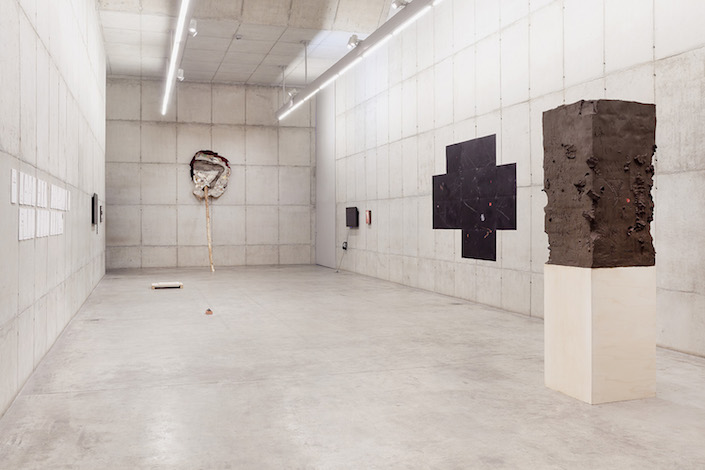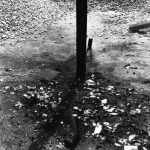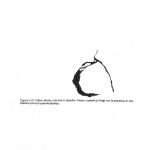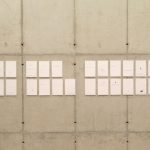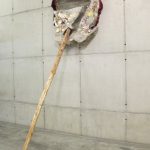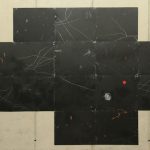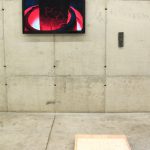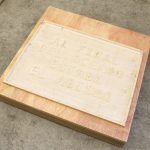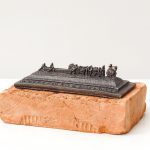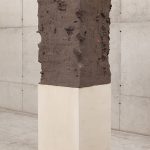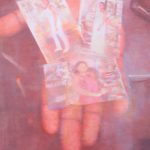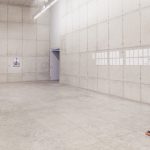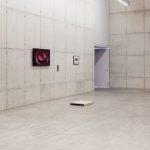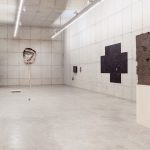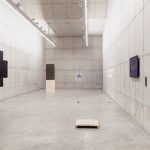The dialogue with the dead must not stop until they deliver
the future which has been buried with them
Heiner Müller
In the original sense, a monument can be understood as “a work of man erected for the specific purpose of keeping particular human deeds or destinies (or a complex accumulation thereof) alive and present in the conciousness of future generation.”[1] Built on a durable material, the monuments sometimes aim to eliminate traces of the passage of time; it’s forms synthesizes, in balance and magnificence, the heroes, martyrs and characters of selected social facts. They seek to forge a collective memory in order to create a sense of belonging to a particular group; they aim to reinforce the sociopolitical boundaries in the Nation State imagination and mark their presence in the public space, wether it be a contemplation site or a passageway. Not coincidentally, the Monumento às Bandeiras [Monument to the Settlers] of Victor Brecheret, opens the Avenue Brazil.
The title of the exhibition Totemonumento refers to the very controversial work of Cildo Meireles, Tiradentes: Totem-Monumento ao Preso Político [Tiradentes: Totem-Monument to the Political Prisoner]; held in the context of the iconic exhibition Do corpo à Terra [From Body to Earth], curated by Frederico Morais, in Belo Horizonte, in the year 1970. The action consisted of tying ten chickens to a wooden stake and burning then alive. It took place during the opening of the exhibition, on the holiday’s eve of Tiradentes, in which the figure of the conspirator was taken as a national hero by the military dictators. As is known, Tiradentes was arrested, tortured and killed for opposing the State, and the violence inflicted on him in the eighteenth century was used as an oppression tool. After being dismembered, its limbs were scattered and exposed in public squares in cities in Minas Gerais to scare other possible conspirators. Cildo’s action consisted of a brutal critique, a reaction in the heat of the moment to the cynicism of state power over historical narratives, which transformed a political prisoner of the past into a hero of that present, while the same State was torturing, persecuting and arresting many others who disappeared during the military dictatorship and whose stories still need to be tell. The violence, in the context and in the action itself, points out to the instrumentalization of death, which transforms subjects into martyrs, heroes or anonymous statistics.
From the ephemeral “monument” of Meireles, it remained coal, feathers and photographs, along with the memory of the artist and who witnessed the action. This work is presented in the exhibition as a critical reading of the Brazilian history made at a crucial time in its development. The decision to show one picture of the series of documentation photographs – specifically, the picture of the day after, with coals and feathers – leads to the desire of updating some of the questions that this work raises: how the past is rewritten today? How their marks are part of the present and how it directs it? What was aimed to be forgotten and to whom were erected “monuments”? How to restore silenced stories from what’s left?
Memory becomes a place of dispute, and permeated by various forces, may become a tool for power, whether it be for sovereign or resistance; It is also the place of survival. Transcends the body and insists on returning. In this exhibition, the idea of monument is justaposed to the idea of document[2], taking into account that every monument / document is the result of an assembly, a framework made by the society on history and time, according to certain interests. Therefore, the monuments represent a narrative on the past built in the present, for the future – it is also an analytical material about the ways of building a collective memory.
Thus, we must also look through these monuments / documents to glimpse a part of history that has no representation. Shattered in ruins, it becomes almost an archaeological document – these “antimonuments” are formed by fragments left over from a history that was meant to be erased, silenced. This idea is explored in the work of Clara Ianni, Reparação [Repair], in which the artist addresses the rescue of these narratives through bones. Based on a manual for Forensic Antropology used by teams that investigate crimes committed by the Brazilian State, the artist created a series of drawings that propose a repair of these traumatisms through image – for each catalogued fracture, there’s a graphic intervention. Analysing the relation between the fractures and the institutional procedures of control and oppresion over bodies, the work constitute a typologie of abstract forms produced by those violations. The abstract form, which is common to the artistic field, is, in this case and at the same time the document and the medium of reconstruction of what was lost – for both the narratives and the broken bones. This constelation of unconcluded fragments that compose this work questions the idea of history as a linear discourse capable of being accessed in an absolut manner.
Form is taken as a common ground in the construction of narratives, such as in the art history or in the research of the past. Ianni takes as basis for her drawings a Forensic Anthropology’s book, an investigative area that is often engaged in the rescue of memory, being responsible for the non anonymity of the dead bodies. They seek to rescue the future that is still buried with them.
The work of Raphael Escobar, Furo[Hole], deals with histories that tried to be silenced but survive through memory and through orality they leak as a constant promise of reviewing the hegemonic narratives. In this work, Escobar brings the memory of a survivor of the massacre at Carandiru jail, crossing it with the various narratives that ran in the press – the idea of history as a version and an assembage is questioned here.
The figures of the survivor, the immigrant and the refugee appears in the work Sobre la Marcha II (o sobrevivente) [Sobre la Marcha (the survivor)] and Zona de Espera (o fotógrafo) [Waiting Zone (the photographer)], by Regina Parra, as presences that indicates to a crisis in the established order of Nation States. From the moment they are forced to leave their country and seek for other territories they colapse the imposed sociopolitical borders, whose collective memory seeks to strengthen, in its monuments, stories, heroes, martyrs and anthems.
The idea of the monument is also permeated by violence, however, the monuments sublimate it in codes and symbols. In Monumento às Bandeiras [Monument to the Settlers] by Jaime Lauriano, the rounds of ammunition used by the military police were merged into a miniature replica of Brecheret’s sculpture – this last one, a “tribute” to the founder ethnocide of the country, was reconstituted here with elements of the maintainers agents of the State. In Sobre Nossas Cabeças [Over our heads], by Erica Ferrari, the “reverse” of an equestrian monument is made of demolition rubble of São Paulo’s buildings and lifted by a wooden stake. It’s fragile support is a symbol about to fall apart and go back to the ruins where it came from. A paw raised horse, in the tradition of equestrian sculpture, means that the “hero” portrayed died on the battlefield – again, it brings the discussion about the making of heroes and the monument as a way to abstract the violence of an historical fact.
In Direito de Resposta, by Frederico Filippi, the artist appropriated from a fragment of the Monument to the Discovery of the Americas, located in Madrid, and merged into a plate, then, irregularly installing it next to the monument. This plate was placed as a response to ethnocide practiced in the Americas to show that while Europeans found another continent, indigenous peoples found the abyss. Then the painting Mapa refers to the “discovery” and the restructuring of the political geography from the point of view of the invasion of a territory, the establishment of states over the ethnocide of indigenous autonomous societies, the restructuring of the lines and limits, both cosmological and political. In Contextualizable [Contextualizable], José Carlos Martinat turns to the idea of history and memory as dispute, moldable according to time and to who intends to do so. Non-representation and instability compose this antimonument.
The works in Totemonumento aim to investigate the idea of historical narrative constructions, memory as resistance and survival, representations and non-representation – or, as would the historian Jacques Le Goff say, it is to confront the historical representations with the realities they represent.
Isabella Rjeille
São Paulo, January of 2016
[1] Alois Riegl. The Modern Cult of Monuments: Its Essence and Its Development. Originally published in Der moderne Denkmalkutus: Sein Wesen und seine Entstehung (Vienna: W. Braumuller, 1903). Translated by Karin Bruckner with Karen Williams.
[2] The historian Jacques Le Goff, in his essay Document / Monument compares the idea of monument with the idea of document, considering the document as an “assembly, conscious or unconscious, of history and time, by the society that produced it, but also by the successive epochs during which continued to live, perhaps forgotten, manipulated, even if by silence. The document is something that is, that lasts, and the witness and the knowledge (to evoke the etymology) that it brings must first be analyzed, demystifying it’s aparent meaning. The document is a monument. Results from the effort of historical societies to impose to the future – willingly or unwillingly – certain image of themselves. Ultimately, there is no document-truth. Every document is a lie. It is the role of the historian not to play the naïve “(Free translation from Document / Monument. In: History and Memory. Translation to Portuguese: Bernardo Leitão. Editora Unicamp, Campinas, 1990. P.547-548).
